|
Our 5th day in Egypt was one I had been looking forward to for months! I mentioned in an earlier blog our trip to visit the Pyramids of Giza was one of the BIG days on our journey. Today was another one of those BIG days - a hot-air balloon ride over the famed Valley of the Kings at sunrise! In order to be “in the sky” at sunrise, we had to leave the MS Farah at 3:30am and drive over to the west bank of the Nile river across from the Ancient city of Thebes (now Luxor). As was the case in Giza, ancient Egyptians typically buried their dead on the west bank of the Nile and lived on the east bank. We first boarded a small bus to take us to the boat launch where we would cross the river. Once on the other side it took about 20 minutes to drive to our meeting spot near the Valley of the Kings. It was still quite dark when we arrived, and while most of the 30 or so balloons were being unfolded on the ground, a few were already attached to their baskets. The flames from the propane tanks heating the air for the balloons were filling the desert sky with an eerie orange glow. After about 30 more minutes, our balloon was filled and ready to load up with passengers. Our basket held 12 people on each side plus the pilot and crew. While it was a bit of a squeeze, the visibility was good on all sides. The thick braided ropes anchoring us to the ground were released and we floated gently upward into the murky, pre-dawn sky. Looking out at the horizon, it was amazing seeing another dozen or so brilliantly coloured balloons, all at different altitudes, seeming to hang motionless in mid air. We had started a couple of kilometers downwind of the Valley of the Kings, and were being guided towards it by a gentle breeze. The sun was just breaching the horizon to the east. Over the next few minutes, the desert floor below changed from black to deep purple to bright orange and finally to gleaming gold as the sun crested the distant hills. From our vantage point, 1500 meters in the air, we had unobstructed views of the Valley of the Kings and surrounding area below us, including the magnificent Habu Temple which is the mortuary temple of Ramesses III. We continued to “sail” over the Theban Necropolis for about 45 minutes before descending gently onto the windblown desert sands to the west of the Valley of the Kings. Upon landing, a van picked us up and drove us to a small cafe in a nearby village, where George (our tour guide and Egyptologist), met us and took us to the entrance of the Valley of the Kings. Here we boarded a small tram that drove us about 3 minutes and dropped us off near the entrance to the tombs at the base of Al-Qurn, the tallest peak in the Theban Hills. While there are 63 tombs in the Valley of the Kings, not all are open to the public. Even the tombs that are open to the public rotate as to when they can be accessed. Currently there are 11 tombs that can be visited at the site (8 are available on the regular entrance fee and 3 require an additional fee). We visited 3 of the tombs - Ramesses IV (2nd discovery), Ramesses IX (6th discovery) and Ramses III (11th discovery). The tombs were constructed over a period of 500 years from the 16th to 11th century BC, and despite being vandalized by grave robbers over the centuries, they have stood the test of time and remain in remarkable condition. Each of the tombs that we visited was elaborately decorated with colourful hieroglyphics. The tomb of Ramesses IV has a large passageway and detailed hieroglyphics that depict the Book of the Dead. The tomb of Ramesses III is one of the largest and best preserved tombs in the Valley of the Kings. The tomb of Ramesses the IX is one of the simpler tombs, but also has one of the largest entrances of any tomb in the Valley. In total we spent over an hour exploring the 3 tombs and finally succumbed to the intense heat of the late morning desert sun. Before leaving the area of the Valley of the Kings, we visited the magnificent mortuary temple of Queen Hatshepsut, one of the most impressive temples in all of Egypt. Hatshepsut was the first female ruler of ancient Egypt and while she initially was acting as regent for her young stepson Thuthmose III she eventually reigned as a male Pharoah and was depicted as such in statuary and reliefs. Her reign was one of the most peaceful and prosperous in Egyptian antiquity. Following our vist to the Valley of the Kings, we stopped briefly at an Alabaster shop where we were shown a variety of handcarved pieces made from white, green and brown varieties of the stone. Craftsmen were busy shaping the gypsum into ornaments and statues then shining light through the translucent stone to display the warm glow and dancing colours that emanated through the alabastar. Our final stop before heading back to Luxor and the MS Farah was at the Medinet Habu Temple. We had seen this temple from the hot air balloon in the morning and now we were going to get an inside view. The Habu Temple is the mortuary temple of Ramesses III was the administrative centre of ancient Thebes and is surrounded by massive wall. The temple itself is the second largest ancient temple discovered in Egypt and while it was used for mortuary rituals it was also used as a place of worship to the sun god Amun. The temple is nearly 500 feet long and sits in a precinct which is approximately 700 feet wide by 1000 feet long. The walls of the precinct are extremely well preserved and covered in intricate hieroglyphics and carvings. The temple also boasts huge columns though many at the back of the temple have been cut down over the centuries. As the afternoon sun climbed higher into the sky, the temperatures rose proportionately and it was approaching 40 degrees celcius. We finished up our visit of the area around the Valley of the Kings and headed back to Luxor where we boarded the Farah, had lunch and headed up to the pool deck. The Farah set sail around 2:00 pm and we spent the afternoon swimming and lounging on the deck. As we sailed south towards Edfu, several small boats would approach the Farah, sail alongside and throw products they were selling up to the pool deck. If you decided you wanted to buy their wares, you would toss money down to the boats. If you didn’t want what they were selling you would throw the products back down to them. We continued sailing south and passed through a set of locks at Esna which we were able to observe from the pool deck. After passing through lock we continued sailing towards Edfu. Shortly after sundown we headed to the main lobby where the Farah was hosting a complimentary cocktail reception before dinner. After dinner we relaxed and lounged until the Farah reached Edfu at around 10:30 pm, then headed for bed to rest for our next day in Ancient Egypt.
Planning a trip to Egypt? Reach out for expert advice and assistance with your holiday planning. Continue to Day 6 - click here.
0 Comments
Our 5th day in Egypt began extra early as we had to check out of the hotel by 6:00 am in order to take a flight from Cairo to Luxor, a city in Upper Egypt approximately 800 kilometers south of the Mediterranean Sea. This was another special part of our Egyptian vacation as today would be the start of our 5 day river trip down the Nile from Luxor to Aswan. We arrived at the airport in Luxor shortly after 10:00 am and after gathering our bags we boarded the van that our guide and Egyptologist, George, had arranged for us. Our drive took us from the airport and through the town, stopping along the Nile near the Luxor Tower where we found our boat, the MS Farah, docked amongst a dozen or so other Nile Cruise ships. We boarded the boat and after a brief check-in where we received our cabin key and instructions, we made our way up a flight of wide stairs in the centre of the lobby to the next deck where we located our room. We walked into a large rectangular room basking in bright sunshine that was streaming in from glass sliding doors leading to the balcony. A queen size bed, mounded with luxurious pillows and soft linens was the centre piece of the cabin. Facing the bed was a long desk/dresser with a flat screen tv. The private bathroom was large, modern and featured a full-size tub. This would be our home for the next 4 nights. After settling into the room we met the rest our party - Karen, Geoff, Ian and Erica - in the dining room for a buffet lunch, then went onto the upper deck of the Farah where we found the pool, sitting area and deck lounge. At 2:30pm we were ready for our first excursion into Luxor. While Luxor is a smallish city (approximately 500,000), it boasts a long and celebrated history. The ruins of the ancient city of Thebes, the capital of Egypt from about 2000 BC to 1100 BC, lies within Luxor. Luxor is reputed to be the “world’s largest open-air museum” as it boasts two significant temples, Luxor and Karnak, while just across the Nile is the west bank Necropolis which includes many temples and monuments which make up the Valley of the Kings and the Valley of the Queens. This is also where the tombs of the Great Pharaohs were found, including that of King Tutankhamun. We would be visiting most of these incredible sites over the next day and a half starting with the Karnak temple. Karnak is considered to be the 2nd most visited historical site in all of Egypt, behind only the Pyramids of Giza. Karnak is actually a complex of 4 main parts, with only one being open to the public. It is significant because its development and use spanned the lives of 30 different pharaohs over a period of 1500 years. Highlights of the Karnak temple include 2 massive obelisks and 134 intricately carved columns that were truly spectacular in size. The larger obelisk was erected by Queen Hatshepsut (1473 -1458 BC) and stands 97 feet tall. It is estimated to weigh approximately 320 tons and was carved from a single piece of granite. The second obelisk is smaller and was erected by Tuthmosis I (1504 - 1492 BC). It is 75 feet high and weighs between 143 and 160 tons. There were several other obelisks at Karnak but they were either destroyed or carted away. One of the obelisks is now situated in a park in Paris. What is truly amazing about the obelisks is that they were carved from single pieces of pink granite from the distant quarries at Aswan, 215 kilometers to the south and transported to Luxor where they were erected. Our second stop was Luxor Temple, located 3 kilometers away at the opposite end of the Avenue of the Sphynx, which, in ancient times, connected Luxor and Karnak. Luxor Temple was built around 1400 BC by a grandfather of King Tutankhamun. Further development of the temple was later done by King Tutankhamun as well as Ramesses II. The temple was used as a legionary fortress during the Roman era and a Roman chapel was built which eventually was transformed into a church. Following our afternoon tour of the temples, we returned to the Farah where we enjoyed a late afternoon swim on the sundeck followed by cocktails and our first a la carte dinner in the ship’s dining room. We opted for an early night as we had a very early and special day planned for tomorrow - a 3:30 am pick-up so we could catch the sunrise over the Valley of the Kings aboard a hot air balloon!
Planning a trip to Egypt? Reach out for expert advice and assistance with your holiday planning. Continue to Day 5 - click here. |
Sharing Our Travel DreamsSharing our personal experiences onboard and on the road, along with tips and insight for creating memorable vacations. Archives
March 2021
Categories
All
|









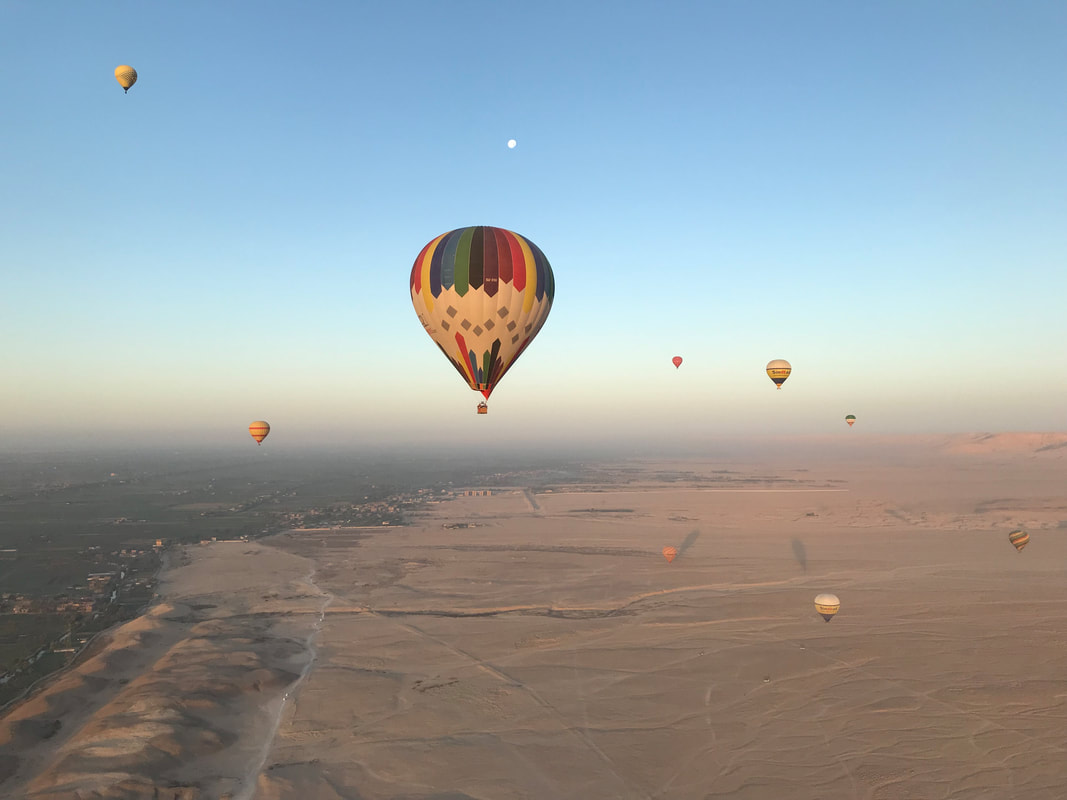









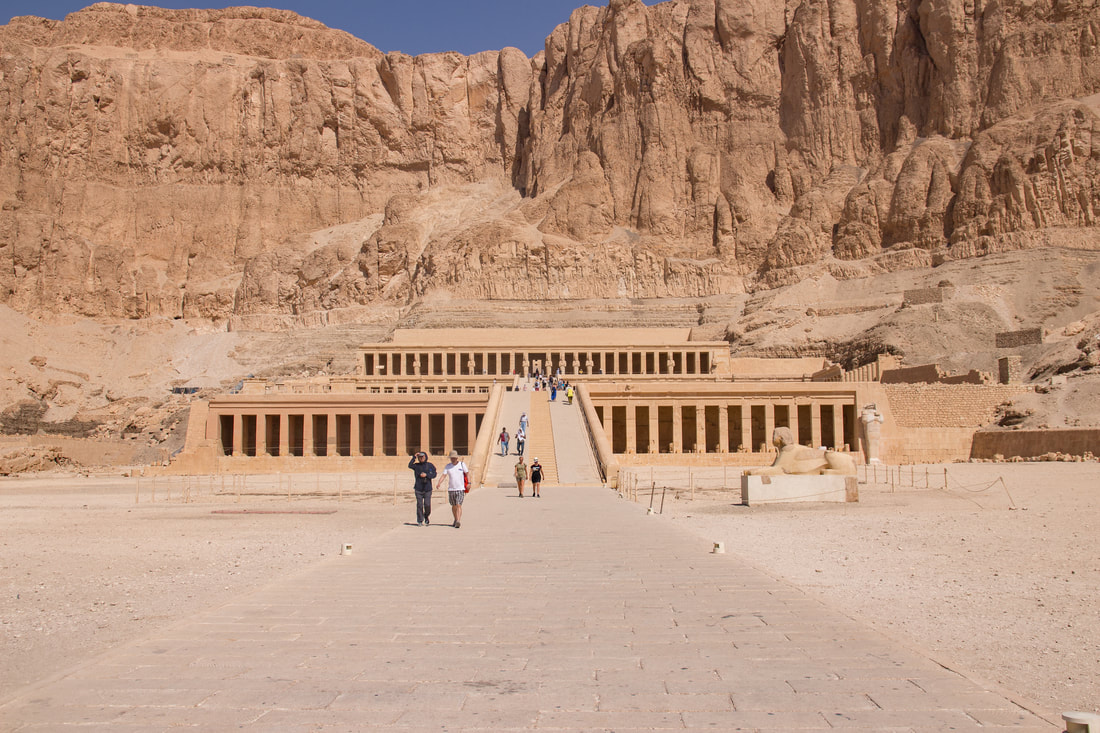
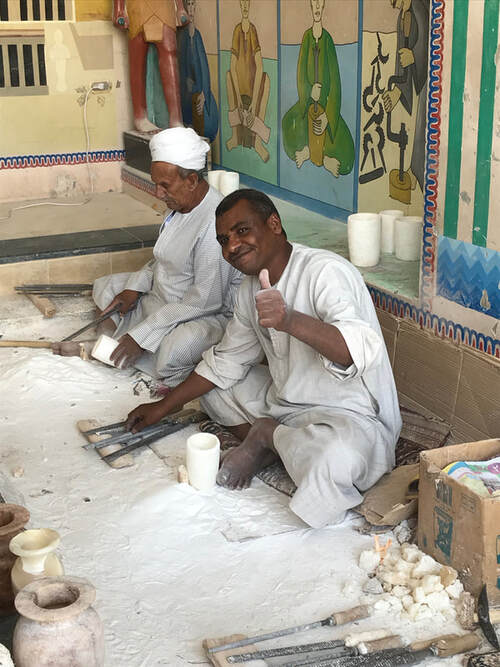
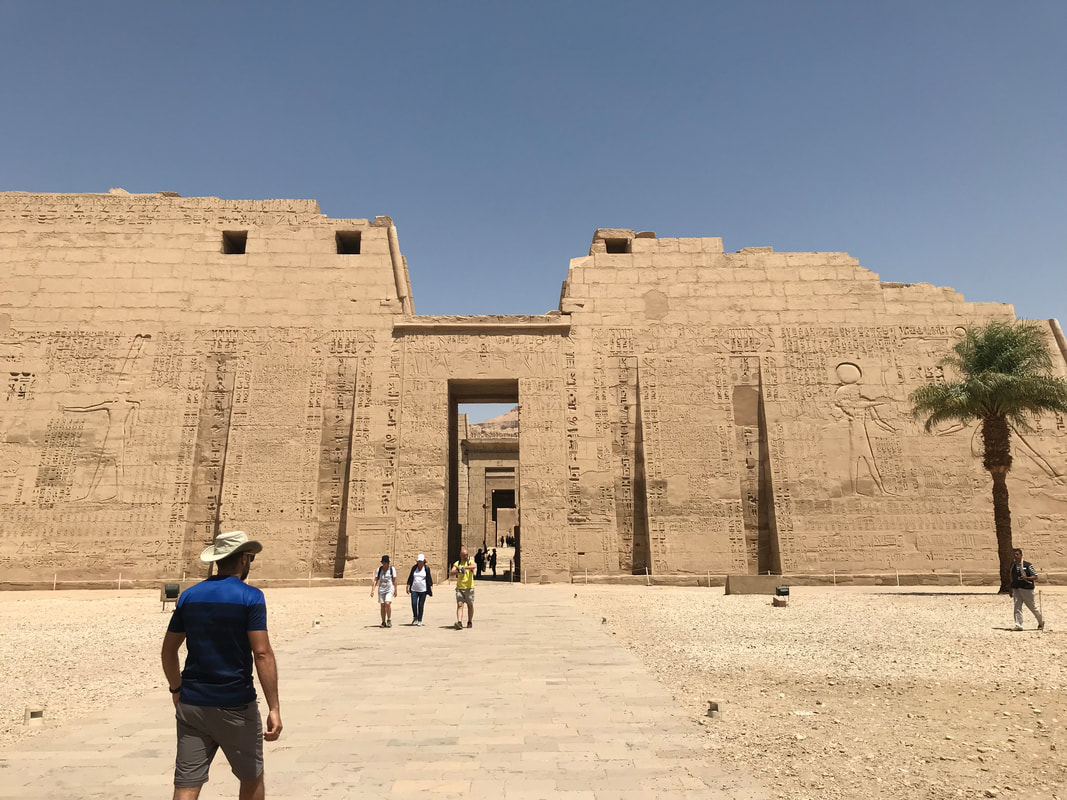
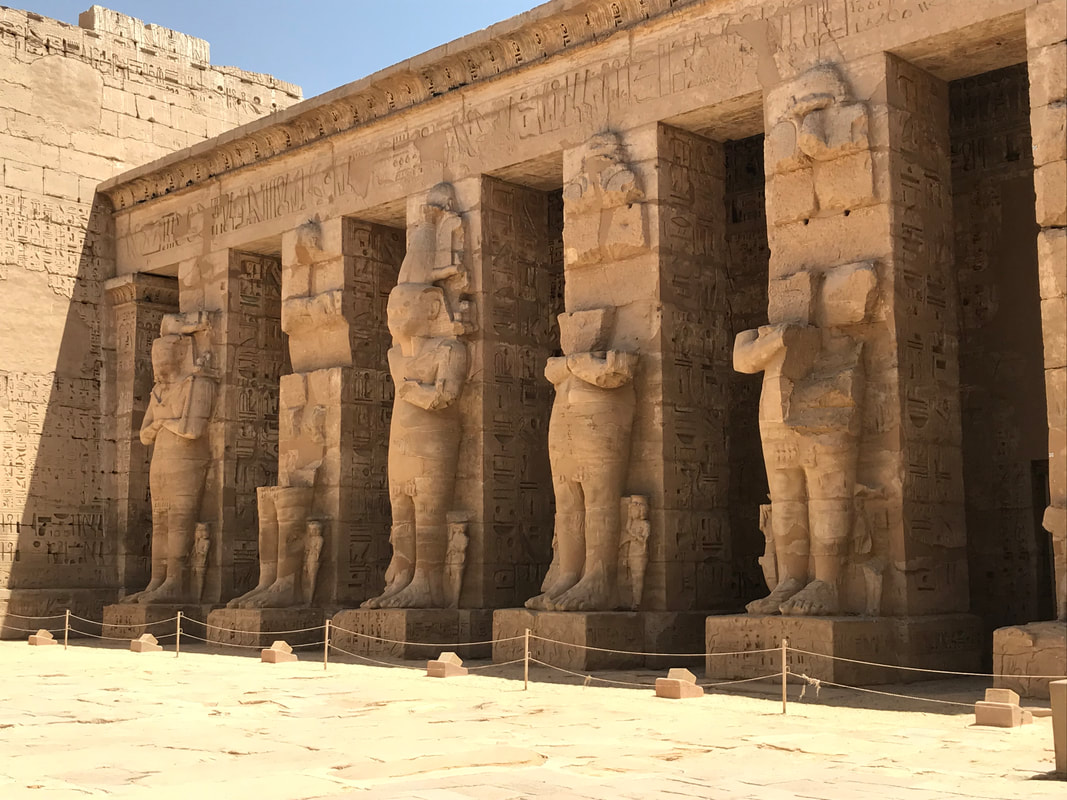










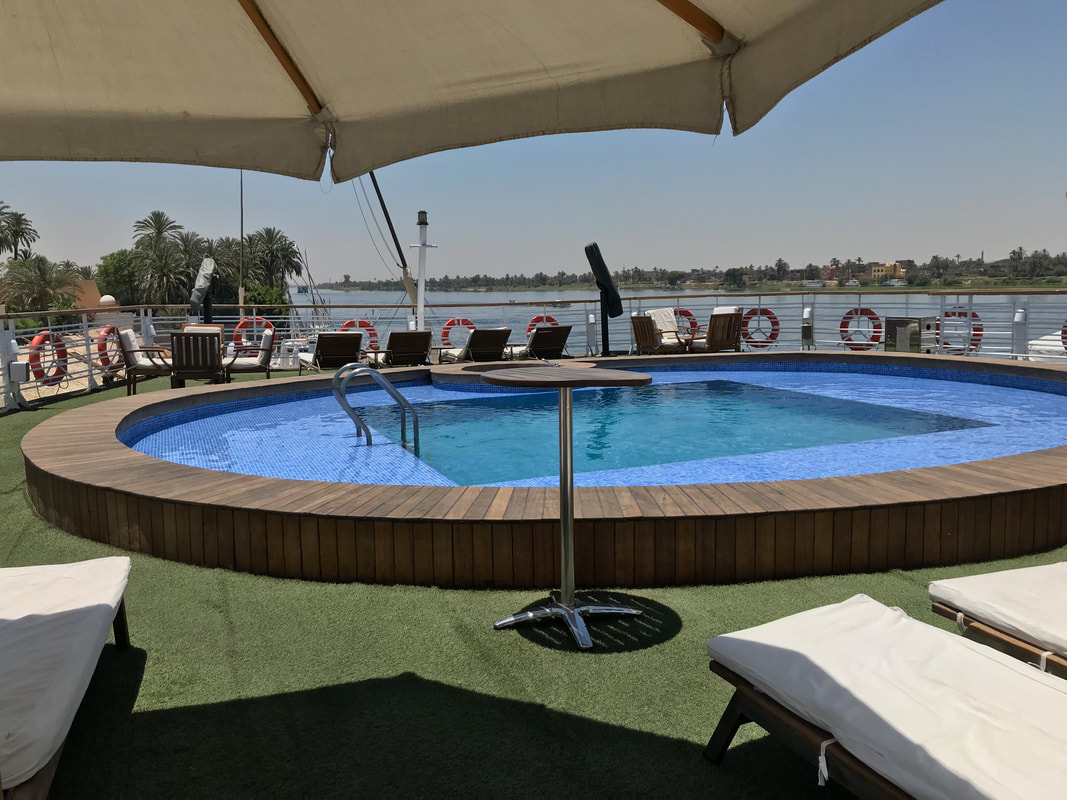


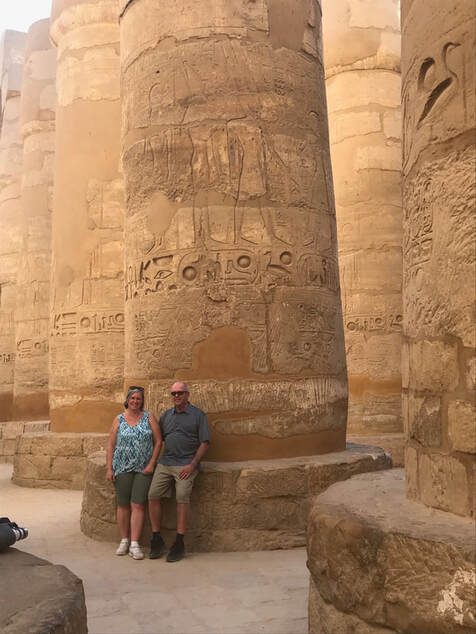





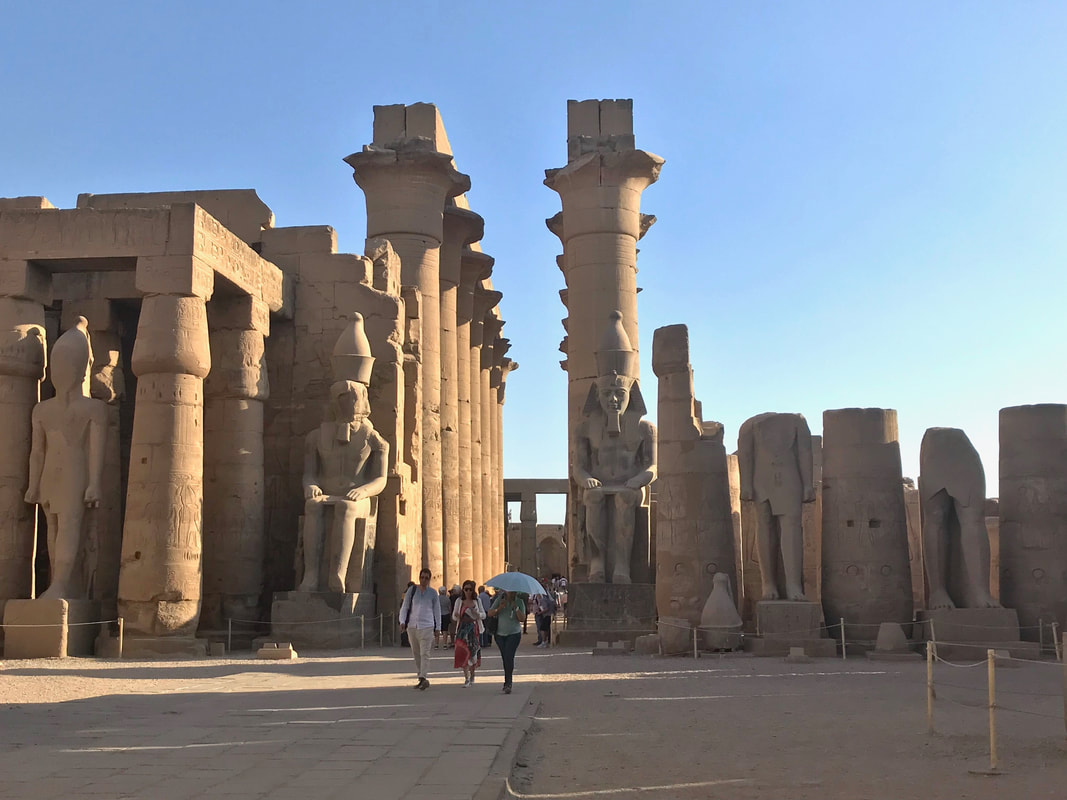



 RSS Feed
RSS Feed